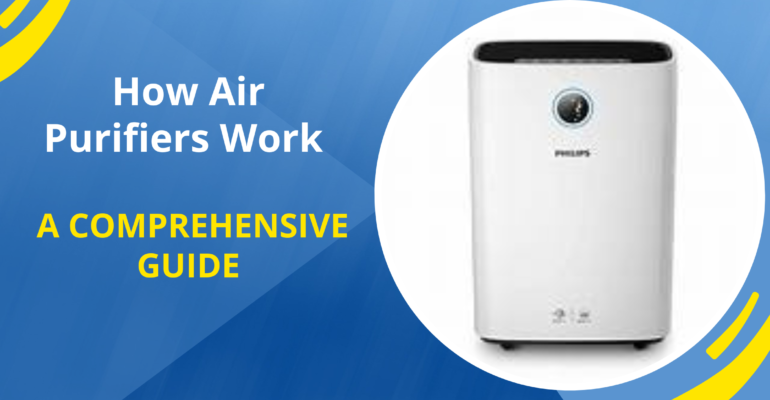The Role of Air Purifiers
August 2, 2024 2024-08-02 8:37The Role of Air Purifiers

The Role of Air Purifiers
Air purifiers have become essential devices in many households and offices, particularly as awareness of indoor air quality grows. These devices are designed to remove airborne contaminants and improve the quality of the air we breathe. Understanding the intricacies of how air purifiers work can help you choose the right model for your needs and ensure you maximize its benefits. Here’s a detailed examination of the mechanisms behind air purifiers.
1. Air Intake
The process begins when the air purifier draws air from the room into the device. This is typically facilitated by a fan, which creates a flow of air through the purifier. The intake is usually located on one side of the device and is designed to pull in air from the surrounding environment, including dust, pollen, pet dander, and other airborne particles.
2. Filtration Stages
Once the air is drawn into the purifier, it passes through several filtration stages, each designed to target different types of pollutants. The specific stages and filters used can vary depending on the model and its intended purpose.
Pre-Filters
The first line of defense in many air purifiers is the pre-filter. This filter captures larger particles such as dust, pet hair, and lint. By trapping these larger particles, the pre-filter helps to prevent them from clogging the more specialized filters that follow. Pre-filters are often washable or replaceable, which helps to maintain the overall efficiency of the air purifier and extend the lifespan of other filters.
HEPA Filters
After passing through the pre-filter, the air moves through the HEPA (High-Efficiency Particulate Air) filter. HEPA filters are renowned for their ability to capture fine particles. They are designed to trap 99.97% of particles as small as 0.3 microns. This includes common allergens such as pollen, dust mites, and mold spores. The HEPA filter consists of a dense mat of interwoven fibers that physically block and trap airborne particles as air flows through it.
Activated Carbon Filters
In many air purifiers, the air then passes through an activated carbon filter. Activated carbon has a large surface area and a highly porous structure, making it highly effective at adsorbing gases, odors, and volatile organic compounds (VOCs). This filter is particularly useful for removing smoke, cooking smells, and chemical fumes from the air. Activated carbon filters do not trap particles but instead capture gases and odors through a process of adsorption.
Ionic Filters
Some air purifiers use ionic filters or ionizers. These devices release negatively charged ions into the air, which attach to positively charged particles like dust, allergens, and smoke. This process causes the particles to clump together and either fall out of the air or be collected on a charged collection plate within the purifier. While effective at reducing airborne particles, ionic filters can sometimes produce ozone as a byproduct, which can be a concern if present in high concentrations.
UV-C Light Filters
UV-C (ultraviolet-C) light filters use UV-C light to kill microorganisms such as bacteria, viruses, and mold spores. The UV-C light disrupts the DNA of these microorganisms, rendering them inactive and unable to reproduce. UV-C filters are often used in combination with other filters to enhance the overall effectiveness of air purification, particularly in killing germs and pathogens.
3. Air Releasing
After the air has been filtered through the various stages, it is expelled back into the room through an exhaust vent or grille. The purified air should have fewer contaminants, making it cleaner and healthier to breathe. The effectiveness of an air purifier is often measured by its Clean Air Delivery Rate (CADR), which indicates how quickly and efficiently it can remove specific pollutants from the air.
4. Key Considerations
When choosing an air purifier, several factors are important:
- Room Size: Air purifiers are designed for different room sizes. Check the manufacturer’s specifications to ensure the unit is suitable for your space.
- Filter Types: Consider what types of filters are included and whether they address your specific needs, such as allergens or odors.
- Noise Level: Some air purifiers can be noisy, especially at higher settings. Look for models with quiet operation if noise is a concern.
- Maintenance: Regular maintenance is crucial for keeping the air purifier running efficiently. This includes cleaning pre-filters and replacing HEPA and carbon filters as needed.
Conclusion
Understanding the workings of air purifiers helps you make an informed decision about improving indoor air quality. By comprehending the filtration stages and mechanisms involved, you can select a device that effectively addresses your specific air quality concerns. With proper maintenance and the right choice of purifier, you can enjoy cleaner, healthier air in your home or office.



